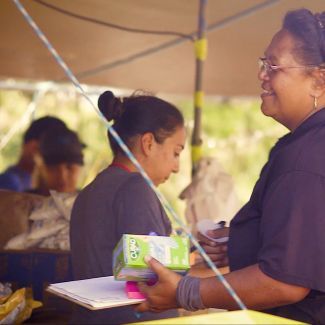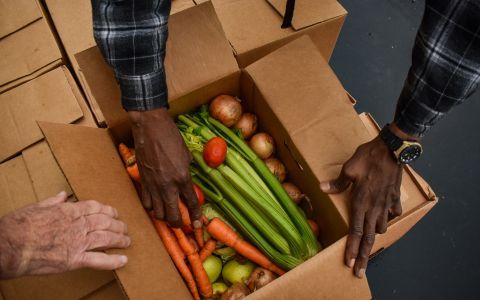The Feeding America network
The Feeding America network consists of food banks, food pantries, local meal programs and the Feeding America national organization. Together, we work alongside communities experiencing food insecurity to get the food and resources people say they need.

A nationwide movement to end hunger
Anyone can experience food insecurity, regardless of race, background or ZIP code. Here's how Feeding America works with thousands of organizations to support local communities like yours. See a full list of partner food banks >
-
 Sharing food with communities
Sharing food with communitiesWe work with farmers, manufacturers, retailers and government agencies to save unwanted food from landfills and move donated grocery items to where it is needed most. Network food banks collect, sort and distribute these donations to local food pantries and meal programs. Food pantries and meal programs in the network then distribute the food directly to people in their communities.
-
 Providing financial support
Providing financial supportYour donations to Feeding America help local food banks and their community partners address hunger and its root causes within their communities. In 2022, Feeding America provided $244 million to support network members' training, refrigeration, transportation and technology investments.
-
 Advocating for Anti-Hunger Policies
Advocating for Anti-Hunger PoliciesEnding hunger will take more than just food. It's why we support policies that improve food security for all and work to address the root causes of hunger—like health, cost of living and housing.
Food Bank vs. Food Pantry: What's the Difference?
No one can thrive on an empty stomach. While food banks and food pantries are critical to the Feeding America network, they play unique roles in helping to get food and resources to the communities that need it.

